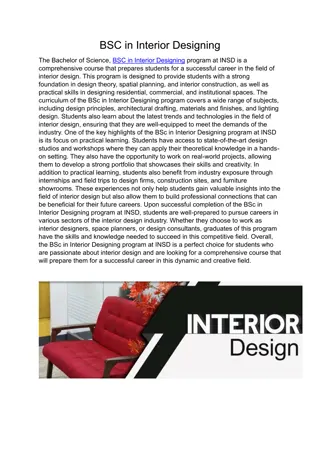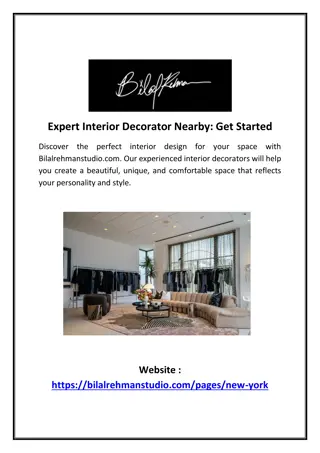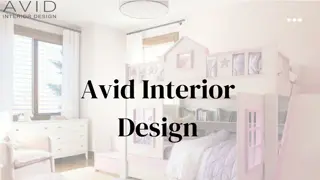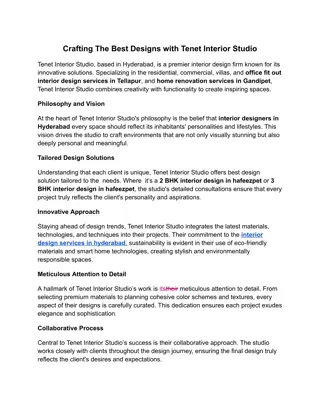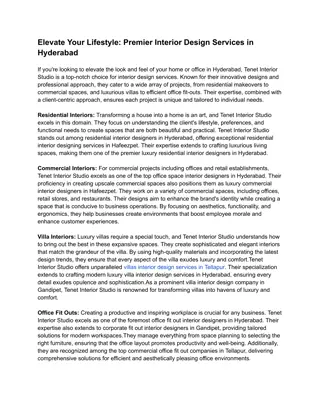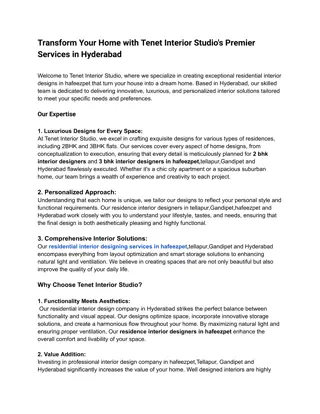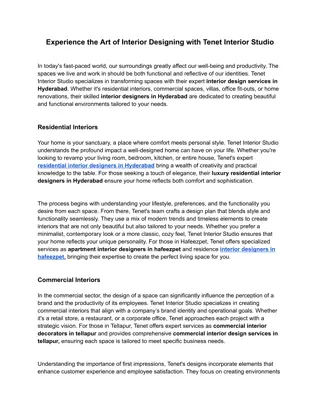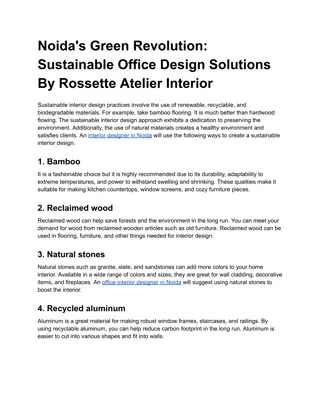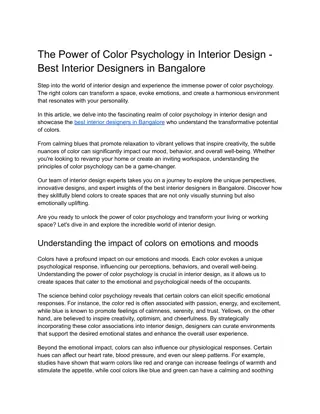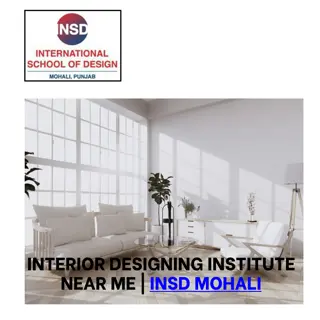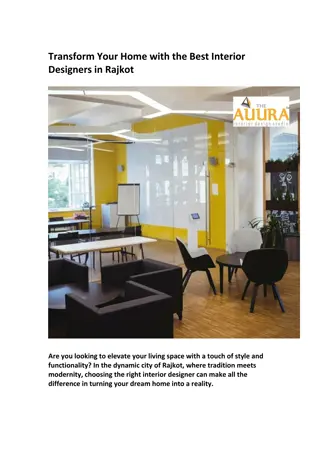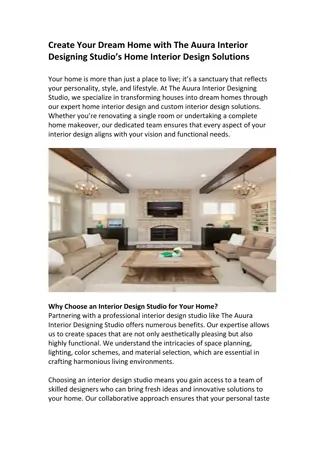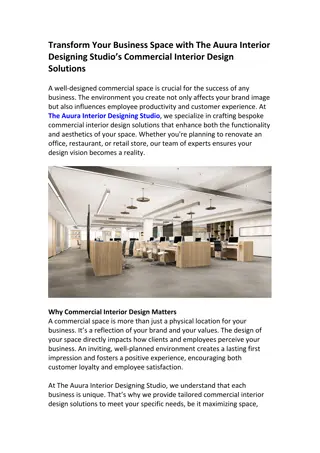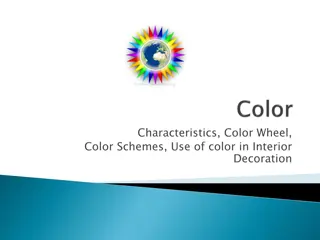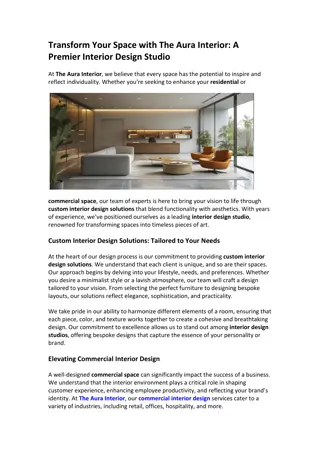Principles and Elements of Interior Design Explained
Explore the fundamental principles of interior design, including proportion, rhythm, emphasis, balance, scale, and harmony. Delve into the significance of scale, proportion, rhythm, emphasis, balance, and harmony in creating cohesive and visually appealing spaces. Discover how design elements like space, shape, form, mass, line, texture, pattern, light, and color play a crucial role in artistic expression across various disciplines.
Download Presentation

Please find below an Image/Link to download the presentation.
The content on the website is provided AS IS for your information and personal use only. It may not be sold, licensed, or shared on other websites without obtaining consent from the author. Download presentation by click this link. If you encounter any issues during the download, it is possible that the publisher has removed the file from their server.
E N D
Presentation Transcript
Evaluates Principles & Elements of Interior Design
Design Fundamentals The fundamentals are known to most professionals as the principles of design. Proportion Rhythm Emphasis Balance Scale Harmony Principles of Design
Scale the entire perspective. The objective with scale is for objects to be alike or harmonious in dimensions or mass as they relate to each other. Principle of Scale
Proportion evaluates the relationship or ratio of parts to the whole. Principle of Proportion
Rhythm speaks to the flow within a room and throughout your home. Principle of Rhythm
Emphasis is the important focal point(s) in a room. There may be more than one focal point but one will be primary Principle of Emphasis
Balance is equilibrium though symmetry (mirror images from a center point), asymmetry (optically varying items from a central point to achieve balance), or radial (equilibrium based on Principle of Balance the circle
Harmony is creating a feeling of suitability through unifying elements and objects and adding variety for interest and diversity. The objective is to create an agreeable, appealing whole that won t tire in the long- run. Principle of Harmony
Design Elements The elements discussed here are used by artisans of all types painters, sculptors, photographers, interior designers, etc. They have been discovered and refined over the course of history and are considered elementary and critical to all fine-art. They are Space Shape & Form & Mass Line Texture & Pattern Light Color Elements of Design
Space as humans, we need both large and small areas to please our psyche There also needs to be a comfortable balance and proportion of positive, filled area, and negative, unfilled area. Element of Space
Shape and Form Shape is the two- dimensional outline while form is the three-dimensional configuration. Element of Shape & Form
Mass is the actual or optical density of an object. Element of Mass
Line is used to create width and height, or the appearance of activity, movement, or flow. The psychological effect of line ranges from secure (horizontal line) free or expansive (vertical) action-oriented (angular) to soft and comforting (curved) Element of Line
Texture is the actual physical feel or surface appearance of a furnishing or treatment. Element of Texture
Color is the most personal and evocative element in design. We all have our favored and least favored color(s) and many people have associations to particular ones. Colors are considered warm (reds, yellows, and oranges), cool (blues, greens, and purples), or neutral (beiges, browns, black, grays, and whites). Light colors provide a more spacious feel; dark ones aid with coziness. Bright colors can be energizing; dull more soothing and easier to live with over time. It depends on what you re trying to achieve. A child s room will have a different color palate than a home office. Element of Color
Pattern is forms arranged in an orderly manner. Combining patterns can be a bit tricky but beautiful. When combining, one pattern will be dominant with others in supporting roles. Element of Pattern
Light is a critical element in all fine-art. You can design a gorgeous room but if it is poorly lit, you may not be able to appreciate it. Natural daylight and artificial light are both considered in planning interiors. Colors, textures, and patterns can be true or altered primarily dependant upon your artificial lighting Element of Light
Knowing the principles and elements of artful interior design provides an excellent foundation. Applying the principles and elements takes thoughtful selection and placement combined with your personal preference and imagination. Your eye is the ultimate judge of good design for you. It takes time and you may never be done. It is like raising a child; there is always something to nurture, something to organize, and something that is not going to behave just as you d like it to. That s part of the challenge and the beauty. The Principles of Design Proportion Rhythm Emphasis Balance Scale Harmony The Elements of Design Color Light Pattern & Texture Line Shape & Form & Mass Space Finishing


